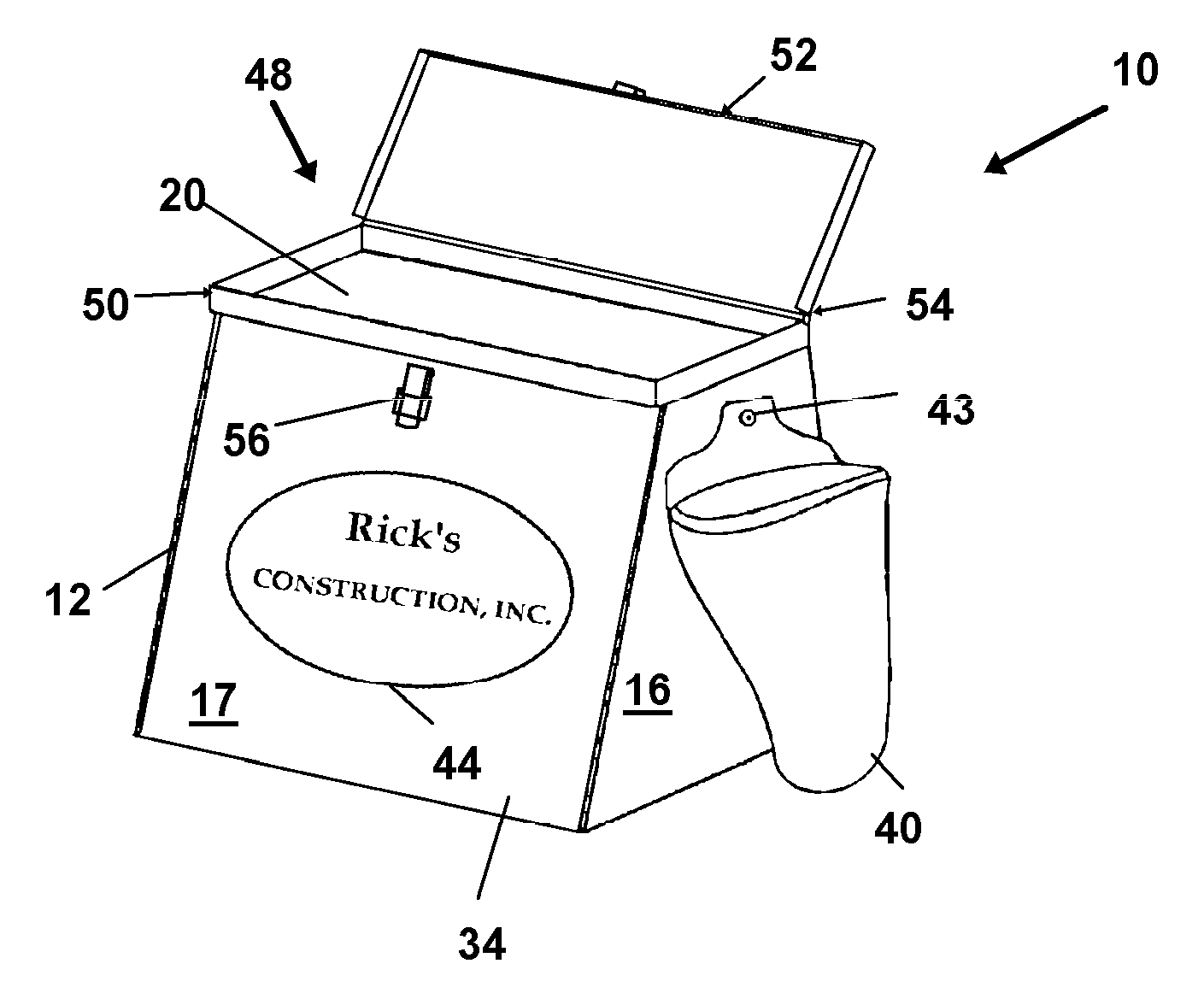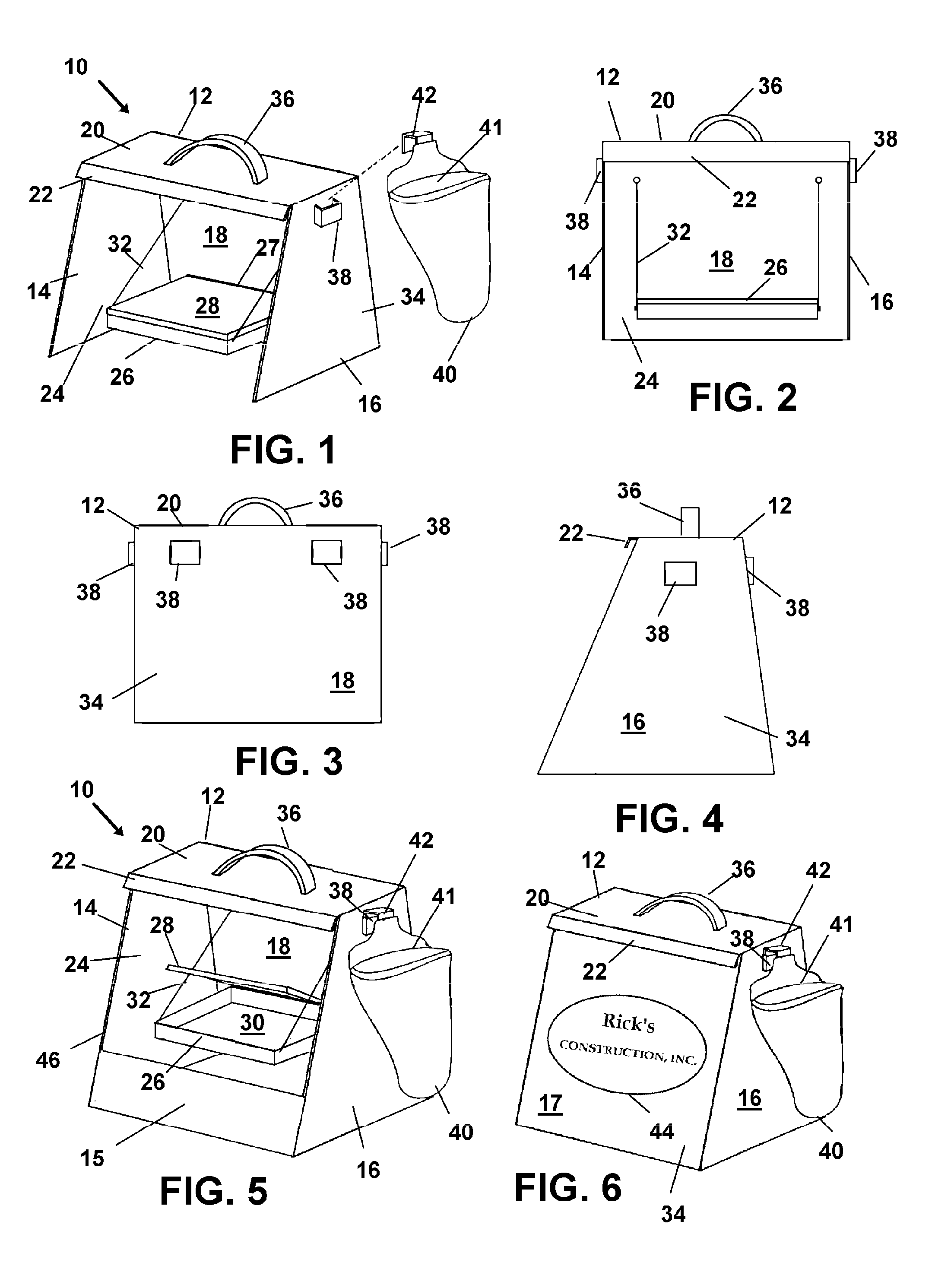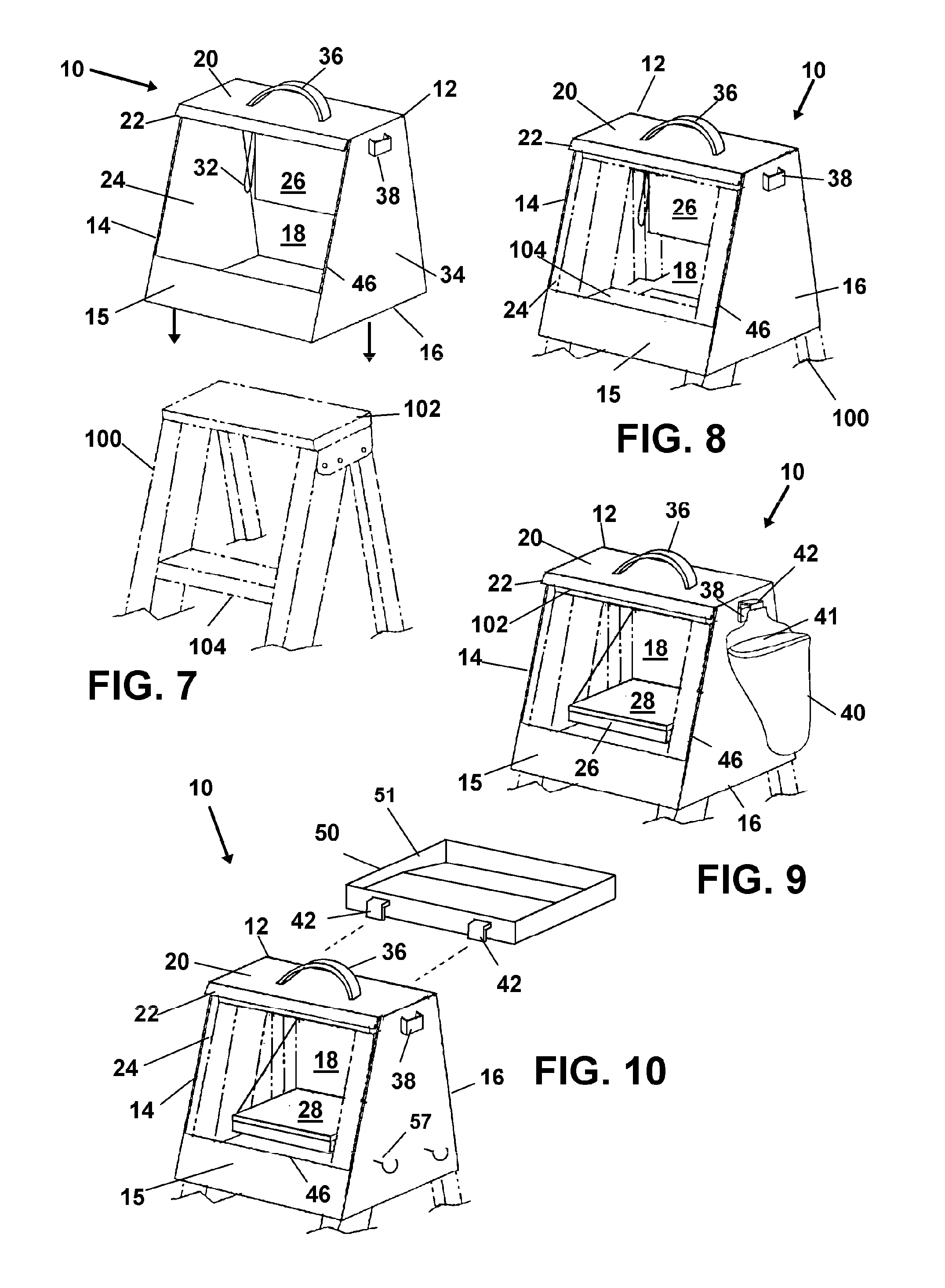Combined ladder engageable tool carrier and step stool
a tool carrier and step stool technology, applied in the field of multi-functional tool carriers, can solve the problems of affecting the user's work, and affecting the user's work, and achieve the effect of simple non-attachment engagemen
- Summary
- Abstract
- Description
- Claims
- Application Information
AI Technical Summary
Benefits of technology
Problems solved by technology
Method used
Image
Examples
Embodiment Construction
[0054]In this description, the directional prepositions of up, upwardly, down, downwardly, front, back, top, upper, bottom, lower, left, right and other such terms refer to the device as it is oriented and appears in the drawings and are used for convenience only; they are not intended to be limiting or to imply that the device has to be used or positioned in any particular orientation.
[0055]Now then, referring to drawings in FIGS. 1-12, wherein similar components are identified by like reference numerals, there is seen in FIG. 1 an perspective view of a preferred mode of the device 10 which is employable as a step stool. As shown in FIG. 1, the device 10 in this mode when employed as a step stool, is placed on ground or other support surface where a step stool is desired. The sidewalls provide a rigid structure for the top wall 20 which provides a platform for supporting a users weight in an elevated position. In this mode, the device 10 is generally formed of a rigid durable sheet...
PUM
 Login to View More
Login to View More Abstract
Description
Claims
Application Information
 Login to View More
Login to View More - R&D
- Intellectual Property
- Life Sciences
- Materials
- Tech Scout
- Unparalleled Data Quality
- Higher Quality Content
- 60% Fewer Hallucinations
Browse by: Latest US Patents, China's latest patents, Technical Efficacy Thesaurus, Application Domain, Technology Topic, Popular Technical Reports.
© 2025 PatSnap. All rights reserved.Legal|Privacy policy|Modern Slavery Act Transparency Statement|Sitemap|About US| Contact US: help@patsnap.com



